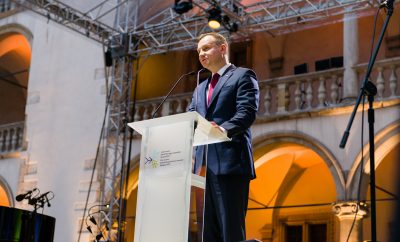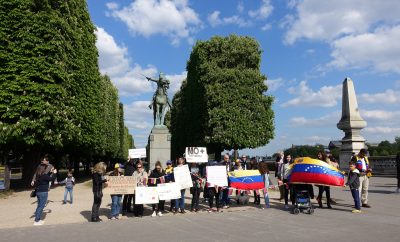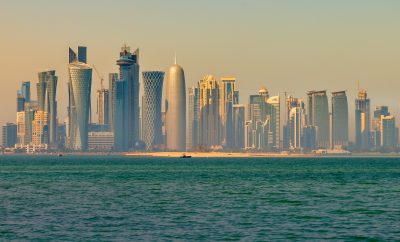 "Luxor Grafitti" courtesy of [prilfish via Flickr]
"Luxor Grafitti" courtesy of [prilfish via Flickr]
Society and Culture
Defining Egyptian Democracy Through Graffiti
Abdel Fattah el-Sisi won the Egyptian presidential election last Wednesday with 96 percent of the vote, according to Aljazeera. This landslide comes as no surprise, since Egypt’s largest media outlets — namely Egypt’s largest state-owned newspaper, Al Gomhuria, and Al Kahera Wal Nas TV Network — have backed El-Sisi since July 2013 when, as Minister of Defense, he led the ousting of Islamist President Mohamed Morsi. Nonetheless, El-Sisi’s election does not change much in Egypt as repressive authoritarian policies, instituted after the ousting of Morsi, continue to plague the Egyptian people.
One measure, proposed in November 2013, banned “abusive graffiti” on buildings in Egypt, and organized government committees in cities to monitor political street art. Violators could end up with four years in prison or EGP 100,000 in fines, according to Egyptian Independent. On the road to Democracy, El-Sisi has promised to restore stability to the State, vowing to “care for the interests of the people,” and build a stronger Egypt. Apparently this means arresting and executing political dissidents, maintaining a tight state-propaganda machine, and setting loose the military as a police force among the Egyptian people. But banning graffiti?
Since 2011, protests swelled into riots that would topple former President Hosni Mubarak, Egyptian graffiti has surged. “Almost every event that happened was mirrored on the streets with art,” according to Basama Hamdy, co-author Walls of Freedom, which chronicles the rise of political graffiti since January 25, 2011. It was the “people’s newspaper,” said Hamdy, with a subversive edge. “Some messages were really dangerous,” said co-author and German graffiti artist Don “Stone” Karl, “they told stories that the state, the military or the police wanted to cover up…Graffiti was never more powerful as it is in Egypt today…Where have you seen mothers cry in front of the graffiti murals of their sons? Where have you seen men pray in front of the portraits of their friends?” Graffiti art has since become a devisive political weapon, and a key target for El-Sisi’s repressive regime.
Graffiti artist Mohamed Fahmy, who goes by the name Ganzeer, is the face of El-Sisi’s recent crackdown on political graffiti. On May 9, 2014, Egyptian news anchor Osama Kamal on his show Al Raees Wel Nas (“The President and The People”) labeled the artist a “terrorist” supportive of the Muslim Brotherhood. This is a serious accusation since the El-Sisi regime sentenced ten Muslim Brotherhood supporters to death last Saturday for inciting violence and political protest. Ganzeer, who was arrested for this political art in 2011, is now in hiding, although he and his cohorts, Finnish street artist Sampsa and the German-based art collective Captain Borderline, refuse to be silenced. In the summer of 2013, Sampsa and Ganzeer collaborated on a poster critiquing aggressive military crackdowns ordered by El-Sisi, then Minister of Defense; “The Army Above All” depicts a bloodthirsty soldier standing triumphant.
Sampsa and Ganzeer have used social media, particularly the hashtag #SisiWarCrimes, to publicize their graffiti and call attention to military abuses. On August 14, 2013, news broke of the worst mass killing in modern Egyptian history, during the military suppression of encampments of pro-Morsi supporters. “We sat watching YouTube clips of Egyptians getting murdered,” Sampsa recalled. “What Sisi needs to begin to understand is that a larger audience is now watching his every move.”
Egyptian street artists like Ganzeer and Sampsa see “a clear progression in Sisi’s silencing of opposition from the NGOs, the Muslim Brotherhood, the youth movement, non-compliant journalists,” writes Bob Duggan of Bigthink.com, “and now, at the bottom of the food chain, street artists.” It is a disgrace that artists would be targeted in such a “Stalin-ish way,” Sampsa exclaimed. “This is the democracy that Sisi is offering in Egypt — absolute rule — absolute oppression of dissent.” In a blog post responding to the recent defamation, Ganzeer sees political graffiti as a source of information to the State, rather than a threat: “By paying attention to what we do, perhaps the State can better understand popular grievances and adjust its policies and governance accordingly, rather than invest so many resources into trying to shut us up.”
As El-Sisi assumes the presidency, though, we can expect more of the same repressive tactics used against the Egyptian people; the military will continue to arrest, and execute political dissidents, while State propaganda will discredit and censor contrarian voices in media. It is much more difficult, however, to control the decentralized protest of graffiti artists. “People forget that the streets belong to the people,” said Ganzeer in an interview with the Christian Science Monitor. “They think that they’re some kind of official government-controlled entity. I think it’s important to remind people that they’re not.” Going forward, political graffiti will remain a voice of democracy in Egypt.









Comments